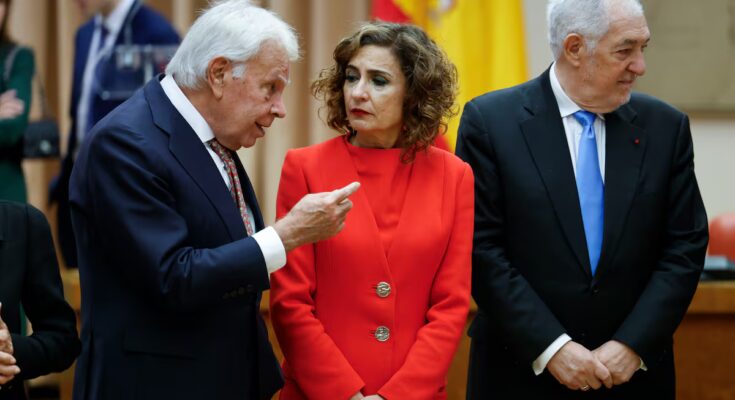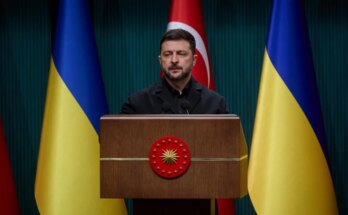Felipe González passed accompanied by his wife, Mar García Vaquero, and wore the brand new golden fleece that the King had just imposed on him. A socialist deputy could not suppress the evil regarding the speeches just delivered at the Royal Palace on the occasion of the celebration of the 50th anniversary of the Monarchy. “The King said dictatorship and Felipe, previous regime,” he whispered. With a punchline: “He didn’t even refer to the president.” González arrived at the Constitutional Chamber of Congress to participate in the second event of the day, a colloquium on Monarchy and the Constitution sponsored by the Royal Household. The former president sat next to the two still living fathers of the Basic Law, Miguel Herrero de Miñón and Miquel Roca. No socialist came to greet him.
The person who came to compliment González was the PP’s parliamentary spokesperson, Ester Muñoz. An example of the paradoxes in which Spanish politics lives: the former socialist president today arouses more sympathy on the right than on the left.
The paradoxes occurred during the event presided over by the entire Royal Family. All participants – journalists Iñaki Gabilondo and Fernando Ónega, historian Juan Pablo Fusi, philosopher Adela Cortina, constitutionalist Rosario García and former Senate President Juan José Laborda – praised the historic role of Juan Carlos I, despite his exclusion from the events. Only the two major parties participated in the meeting, apparently united by the Monarchy and opposed by everything else.
The Chamber of the Constitutional Congress is overflowing with symbols of the Transition. The portraits of the seven spokespersons of the Constitution and the famous painting of the embraces of Juan Genovés hang there. As a result, all speeches exuded nostalgia for the old consensus that gave birth to democracy, as opposed to the hallmark of this era: polarization. With voluntarism, Cortina gave instructions to the parties, convinced that they had “many elements in common”. Neither the PSOE nor the PP show up for work. And the heirs of the other two political currents that participated in the constitutional pact – the communists and Catalan nationalism, with the figures of Jordi Solé Tura and Roca among the seven portraits in the room – did not want to know anything about the event. No one has noticed the hugs since Pedro Sánchez and Albert Rivera signed an ephemeral pact there in 2016 that seems implausible today.
The event took place in an even more heated political climate than usual, after the announcement, the day before, of the Supreme Court’s conviction against the State Attorney General. It weighed on the environment: each tribe went its own way with almost no relationship with the other. The protocol brought together the leader of the PP, Alberto Núñez Feijóo, and the Minister of Justice, Félix Bolaños. There were no major conversations between the two. Also present together with Bolaños were the president of the General Council of the Judiciary and the Supreme Court, Isabel Perelló, and the president of the Constitutional Court, Cándido Conde Pumpido, as well as the only two other members of the Government present, the first vice-president, María Jesús Montero, and the minister of Territorial Policies, Ángel Víctor Torres. Pedro Sánchez was traveling to South Africa at the time to attend the G20 summit.
Finally, the kings and their daughters gathered the main personalities for a family photo. Feijóo remained out, despite Felipe VI having cited him, as head of the opposition, among the authorities he had expressly greeted before his final speech. At that time headlines with the word dictatorship were coming out of the phones. It came from the mouth of Isabel Díaz Ayuso. And not to talk about Franco, but about Sánchez.



